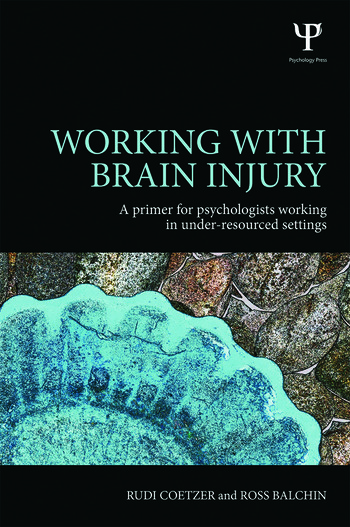A Primer for Psychologists Working in Under-resourced Settings
“Clinical neuropsychology is a curious beast, representing equal measures of science and art. It encompasses the science of brain-behaviour relations and the art of understanding, as well as the applications of these skills on many different levels. Neuropsychology can be very technical on the one hand, but can also demand extraordinary compassion and humanity on the other (p. xiv)”. This definition, offered by the authors of this book, is the simplest, but most insightful, definition I ever heard of the experience of working as a clinical neuropsychologist. To become acquainted with, and comfortable around, this curious beast may take years, or decades, particularly if you lack the necessary guidance. And if you search for advice in books, most of the clinical neuropsychology books [the so called handbooks] work like a taxonomy listing followed by a cookery book. They describe the syndromes in detail, tell you how to differentiate one from another, and then they suggest a set of recipes. These books may give you important knowledge in understanding the beast’s behaviour, as a map of South America will give you important information regarding the locations of cities and where one country limits to another. However, such abstract books tell you nothing about the experience of becoming a traveller – how to behave in a specific culture, which places to visit, where to ask for help. These books say nothing about the journey of becoming a clinical neuropsychologist, the basic equipment you need to carry with you, or the basic skills that you need in order to do the job competently. This book by Coetzer and Balchin is a companion on the journey, a sort of travel guide on the continent of clinical neuropsychology.
There are several reasons why I am enthused about this book. Firstly, its writing style is very engaging. It touches every topic of relevance for our daily work, but does so in a clean and clear manner. There are no obscure technicalities; there are no overwhelming reference lists. This generates an impression of the voice of a mentor, a friendly narrator that is constantly engaging you in a conversation about the neuropsychological journey, with judicious warnings of peril. This encompasses practical tips [e.g. buy a brain model of your own, avoid making predictions] and reflective suggestions [e.g. choose your ideal neuropsychological battery and explain the reasons for this selection]. It is this intimate tone that makes the book uniquely useful for anyone [students of psychology or medicine, trainees, newly qualified psychologists] coming to work with brain injury.
The structure of this book is entirely consistent with its main goal: ‘to create a self-study resource for the reflective practice of practical skills, as well as to function as a teaching resource’ (p. xvi). It is organised into three main sections [each with several chapters] – basic foundations, clinical practice and professional issues. The Basic Foundations section offers a synthetic panoramic of several areas of knowledge that are relevant when working with brain damage, such as neuroanatomy, neuropathology, psychopathology, psychopharmacology, neuropsychological theory and special investigations. This is probably the least innovative section of the book, since it refers to topics commonly covered in handbooks. Nevertheless, the emphasis placed by the authors on the journey of becoming a clinical neuropsychologist provides some new insight. The section on Clinical Practice is extremely interesting, since it takes the reader, step by step, through the different actions he/she will perform on a daily basis: clinical assessment, neuropsychological testing, formulation, neuropsychological rehabilitation, psychotherapy approaches and record keeping. It is in this section where the practical tips, and the points of reflective practice, come into their own. The final section on Professional Issues is quite interesting too, since it moves the reader’s attention away from the tasks involved in everyday work, to issues of professional development, such as professional practice, supervision, research/academia and management.
The reason underpinning this book’s unique quality is that it is written by clinical neuropsychologists who have experienced first-hand what it is like to work with brain injury in under-resourced settings [South Africa and rural Wales]. This is a common reality across many countries [developing and developed], where the resources may not permit the delivery of full packages of rehabilitation in the conventional sense, or permit mentoring of junior colleagues at every stage. Coetzer and Balchin confront the limitations and seem aware that, in those contexts, less may be more. They know that learning a basic set of skills, which can be put then systematically into practice, can make a huge difference. Their book is a materialisation of this idea. I highly recommend this book to anyone interested in using clinical neuropsychology to help individuals with acquired brain injury.
